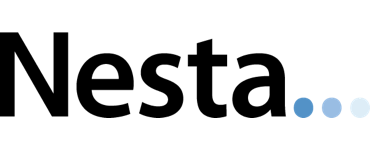Journal of Maps Best Map 2014
It is with great pleasure that I am able to announce the award of the 2014 “Best Map” to Jerzy Zasadni (AGH University of Science and Technology) and Piotr Klapyta (Jagiellonian University) for their map reviewing the Tatra Mountains during the Last Glacial Maximum (LGM). This reconstructed the extent and surface geometry of all 55 glacier systems that were active during the LGM using existing published evidence as well as incorporating new fieldwork and analysis from remotely sensed data. The awards committee noted the elegant layout, good design and attractive inset maps. For these reasons it is a deserving winner of this year’s award and will be available through the Journal of Maps website as a limited print run.
Check out the great movies the authors have put together as well.
Studio of Objects: Scanning a studio…..
Following on from my (very much earlier!!) blog on “Studio of Objects” I’m involved in, I wanted to flesh out the project itself a little further and also talk about some of our initial experiences. No better than to quote from the project homepage:
“The project uses a 360-degree archaeological laser scan to capture the preserved studio of artist Eduardo Paolozzi. The 3D scans will be coded for tablets and used in workshops at Pallant House Gallery to explore how users interact and navigate the studio with this innovative technology…. [and] create new ways for organisations to capture and store their archives digitally, resulting in wider public access.”
For those of you who haven’t heard of Eduardo Paolozzi, take a look at the Wikipedia page. He has extraordinary large-scale sculptures (Vulcan, Newton, Head of Invention, A Maximis Ad Minima) that comprise a mixture of tactile objects (”junk”!) and traditional sculpting (I’m no artist or art historian though!!). He is also seen as a pre-cursor (i.e. did it before anyone else!) of the pop-art movement. His studio was almost entirely left to the Scottish National Gallery of Modern Art and the gallery is worth visiting just to see his gallery laid out in fine detail - having spent two days stood in this amazing location you get a real sense of his working life and the creations that gave him motivation. It is this (largely unique) ability to see art in varying stages of creation and pre-cursors and scale models to the final artworks that make this a remarkable insight in to the workings of Paolozzi.
Which neatly brings us back to the rationale for the research project - this is not about traditional art history, but rather four closely allied prongs to recording Paolozzi’s working environment:
1. Record the 3D interior of the studio using a state-of-the-art laser scanner
2. Develop iOS software to allow full immersion and interaction with the 3D scene
3. Trial and review the interaction of (young) users with the virtual environment as part of understanding and interpreting the work of Paolozzi
4. Document a workflow for other organisations to store their archives
More shortly on the technical setup and initial trial with the Krazy Kat archive
FREE EPRINT: Summary of activities 2014
For the first 50 people, get your free eprint of
Summary of activities 2014
Smith, M.J.
Best Map Giveaway: 20 free copies
At the Journal of Maps we are having a small clearout and are giving away 20 FREE high quality prints of the Journal of Maps 2013 Best Map award winner:
Relief-Rock-Soil relationship in the transition of Atlantic Plateau to Peripheral Depression, Sao Paulo, Brazil
Fernando Nadal Junqueira Villela, Jurandyr Luciano Sanches Ross and Sidneide Manfredini
These are printed to the following specifications:
Flat Size: 297 × 420mm (A3)
Colours: 4 colour process
Paper: 170gsm matt (350 gsm matt cover)
Print Method: HP Indigo digital print
Supply: 10 page atlas, wiro bind on the left hand edge
If you would like a copy please leave your contact details in the comments below - winners will be drawn after Friday 13th February (it will be a lucky day for 20 people!)
Kingston MobileLite MLW221 Storage Reader
Just purchased the Kingston MobileLite MLW221…. this is potentially very useful as it helps (partially) solve the problem of reading storage medium from mobile devices when a computer isn’t available. Whilst some tablets/smartphones allow bi-directional use of the micro-USB port to mount USB sticks through an OTG cable (see relevant part of my comments on the Nexus 7), not all devices can do this…. and it usually needs to be rooted. Hence the wifi storage reader….. it creates a 2.4GHz 802.11n wireless network which you can connect your device to. Sporting both a USB2 and SD card slot you can then access the contents of these media. Given the requirement to run a wifi hotspot, it has a moderately meaty 1800mAh battery which allows it to power external USB devices and also charge other battery powered devices. As the review suggests, its not the fastest performer (i.e. dont use it to transfer GBs of data!!) but for access to media when you are on the go its pretty good. And with Amazon selling it for £20 its a low cost purchase.
